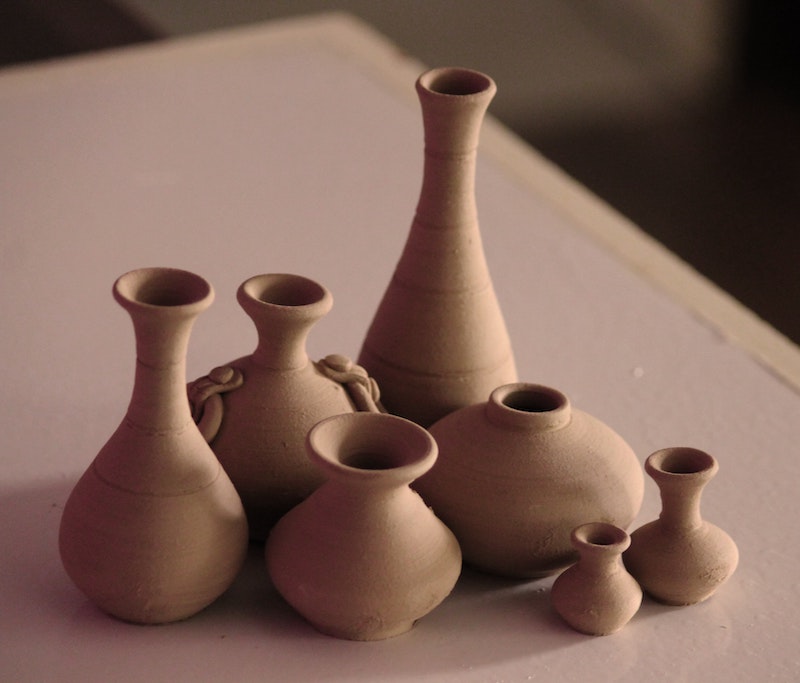In ancient Ethiopia, all cooking was done using hand-made clay pots for different types of food. This method of cooking still remains with some special recipes, the taste of which cannot be replicated in metal pots. Traditional hand-made clay pots often stock the kitchen shelves of Ethiopian homes. The most common type is called a shakla dist, and some Ethiopians will swear that the food tastes better when it simmers in this unique earthenware.
The word shakla means “clay” in Amharic, and shakla dist is the name for a clay pot used for cooking stews (spicy wots and alichas). The plural of dist is distoch. There are many varieties of Ethiopian clay pots of all shapes and sizes and each shape has its own name. The term shakla dist refers to the round pots of various sizes and with lids, usually with handles on the side of the pot and on the top of the lid, and sometimes with a design carved into the clay. A very large shakla dist is used to make big portions of food and is called a setate.
These pots are available to purchase throughout Addis and Ethiopia especially in local markets. Ethiopian restaurants will also use these earthenware pots to produce and serve food. The jebena is a traditional clay coffee pot.
A main source of these pots is the Kechene Women’s Pottery Cooperative, an independent organization consisting entirely of women working on the creation of artistic, traditional and functional pottery products. Established in 1991 through the support of the ILO (International Labour Organization), they received further assistance in 1993, from the UNDP (United Nations’ Development Programs), ultimately becoming in 1993-94, an independent cooperative consisting exclusively of women.
Working the pottery is a fascinating craft, but is also very demanding physically, such as the collection of the raw material, which needs to be collected directly from the river’s shingle-bed. Once dried, the clay needs to be pulverized with a big wooden pestle. The clay powder is then kneaded with water and moulded into various shapes and dimensions. A few days later, when the clay is finally dried and after it has been engraved (if necessary), the products are finally baked. The ovens are very rudimentary, often consisting of merely a hole in the ground, where the objects are placed and then covered with dried dung and potters have a unique technique of conferring a black finish to the pottery, which is originally red. The objects are greased before being put in the oven, and after baking they are left to cool under a mound of dried eucalyptus leaves. Once cold, they come out of the ashes black coloured.
Kechene: Opening are random but call to make an appointment – 0913 64 72 98 or 0913 14 35 01.



